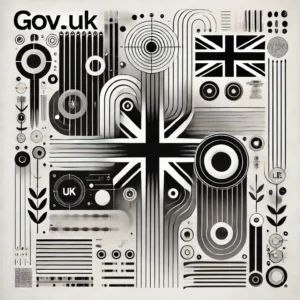Feedback—the very word can send shivers down the spine of even the most seasoned UX professionals. As someone deeply immersed in the world of User Experience design, I’ve danced the delicate dance of giving and receiving feedback more times than I can count. Along the way, I’ve felt the sting of criticism and the warmth of praise, and I’ve learned that navigating this emotional landscape is a crucial part of our growth. Let me share some personal reflections and strategies that have helped me along the way.
The Golden Rules of Giving Feedback
I remember the first time I had to give critical feedback on a colleague’s project. The design was cluttered, and the user journey was more of a labyrinth than a straightforward path. It was bad, yet I know how much that project meant for my colleague and how much time and effort was poured there. My heart raced as I pondered how to convey my thoughts without discouraging them. It’s moments like these that remind me of the power of our words.
That is why I have set up some guidelines to help me face this sort of situations:
- Be Specific and Actionable: Imagine you’re reviewing a set of wireframes, and something feels off. Instead of saying, “This doesn’t look right,” specifically pinpoint the issue. A better approach? “The CTA button blends into the background due to its color, making it difficult to notice at first glance. Consider making it a contrasting color to improve visibility and click-through rate.”
- Sandwich It: Ah, the age-old technique of sandwiching criticism between two positives. It’s like telling your friend they have spinach in their teeth but complimenting their smile before and after. For example, “The user flow from the landing page to checkout is intuitive and smooth—great job! However, the product filters feel a bit overwhelming and could be simplified. On another note, the mobile responsiveness is impeccable.”
- Foster a Culture of Openness: Feedback should be a dialogue, not a monologue. Encourage questions and discussions. This isn’t about proving a point; it’s about achieving the best outcome. For instance, “I noticed the login form is quite lengthy. Could we explore ways to streamline it? What are your thoughts?”
- Be Kind, Be Honest: I’ve learned that honesty doesn’t have to be brutal. “I really appreciate the creativity you’ve brought to this project, and I can see the thought you’ve put into it. I wonder if simplifying some of the design elements might make the user journey even smoother. What do you think?” This approach opens a dialogue, showing respect for their effort while offering constructive insight.
- The Ripple Effect: I’ve seen how my feedback can ripple through a project, influencing not just the design but the designer’s confidence. It’s a responsibility I don’t take lightly. By focusing on how we can improve together, feedback becomes a tool for empowerment rather than discouragement.
The Fine Art of Receiving Feedback
Ah, the other side of the coin—receiving feedback. I’d be lying if I said it doesn’t hurt sometimes. Early in my career, a critique of a project I’d poured my heart into felt like a personal attack. It took time to learn that this feedback wasn’t a reflection of my worth but an opportunity to grow. Feedback can be like boxing, you get thrown some punches and you need to learn and improve from that… Otherwise you will be beaten up constantly.
I know it is hard, but whenever you get feedback please remember to -for your own mental wellbeing-:
- Detach Yourself: First and foremost, remember that feedback is about the work, not you personally. When someone suggests, “The text on the landing page is too dense. Breaking it down into bullet points might enhance readability,” they’re not attacking your writing skills. They’re helping you communicate more effectively with users.
- Ask for Clarification: If feedback seems vague or confusing, ask for specifics. “Could you elaborate on which part of the navigation feels cluttered? Do you have suggestions for improving it?” This shows you’re engaged and eager to improve.
- Thank Them: Yes, thank the person giving you feedback. It acknowledges their effort in helping you grow and strengthens your professional relationship. “Thanks for pointing out that the error messages were unclear. I’ll work on making them more specific to the issues users might encounter.”
Best Practices in Action
Once, after redesigning a navigation system for an e-commerce platform, I received feedback that it was still not intuitive for users. My initial reaction was defensiveness. I had worked so hard on it—how could it still not be right? But after taking a moment to process, I responded with a request for specific examples and suggestions for improvement. This led to a productive discussion that not only improved the design but also deepened my understanding of user behaviour.
That is what feedback should be, a dialogue to unveil ways to improve. So let’s check a couple more examples:
Example 1: The Case of the Unseen CTA
Feedback Given: “The CTA button is hard to find. Perhaps making it a brighter colour and increasing its size would help it stand out more.”
Why It’s Good: It’s specific, actionable, and ultimately aimed at improving user engagement.
Example 2: The Navigation Maze
Feedback Received: “Users are finding the navigation confusing, leading to a high drop-off rate.”
How to Respond: “Thanks for sharing this. Do we have data on which parts are causing confusion? I’d like to explore solutions, maybe simplifying the menu or adding a search function.”
Wrapping It Up: A Journey of Growth
Navigating feedback in UX design is as much about managing emotions as it is about refining designs. By giving feedback with kindness and receiving it with openness, we not only improve our projects but also grow as designers and as people. It’s about building resilience, fostering collaboration, and remembering that every piece of feedback, whether positive or negative, is a step on the path to becoming better at what we do.
So, to my fellow UX professionals: let’s embrace feedback in all its forms. Let’s remember the impact our words can have and approach each feedback opportunity as a chance to learn, to teach, and to connect. After all, at the heart of UX is the experience—not just for our users, but for ourselves and our colleagues on this journey of creation.







